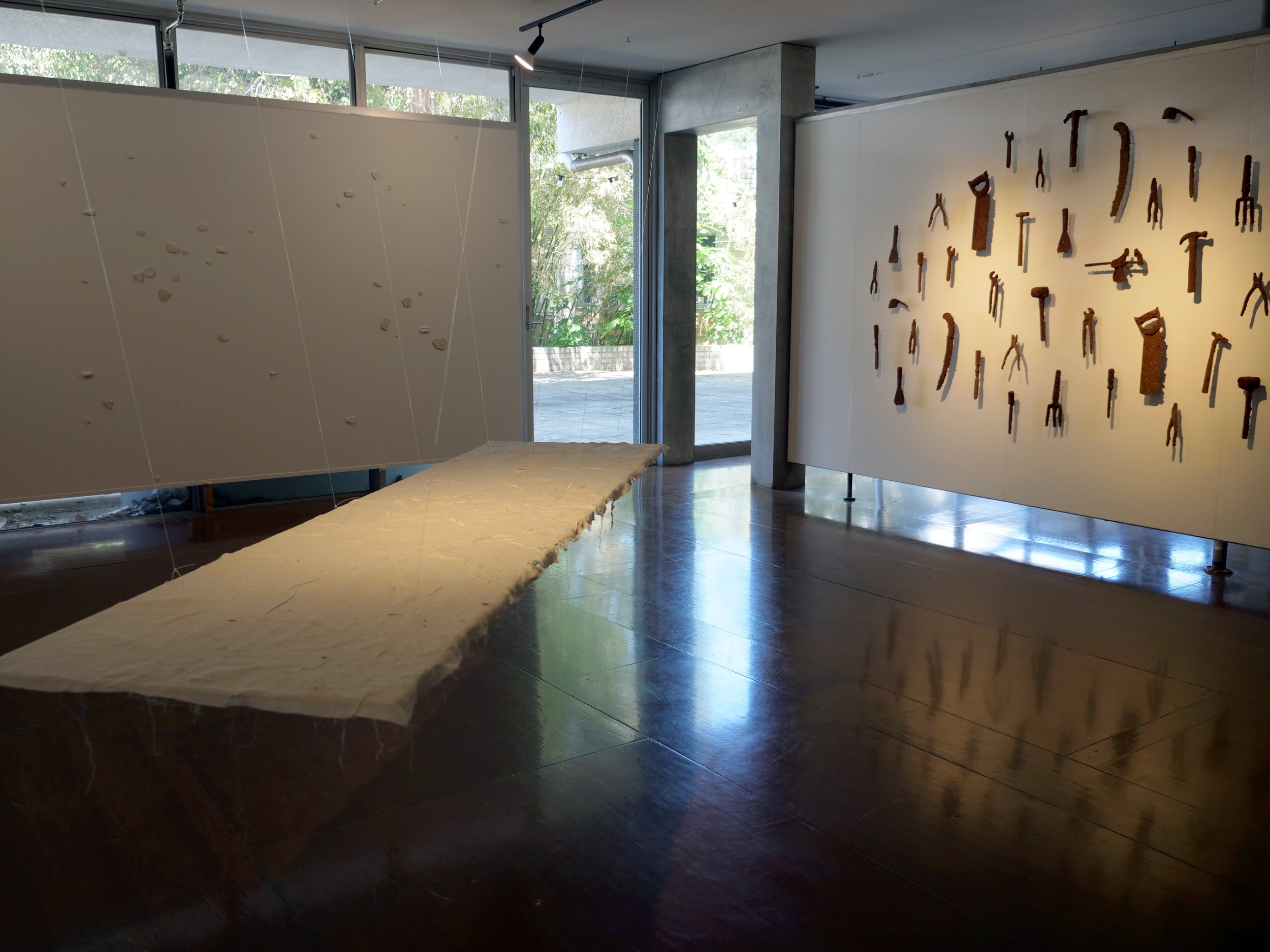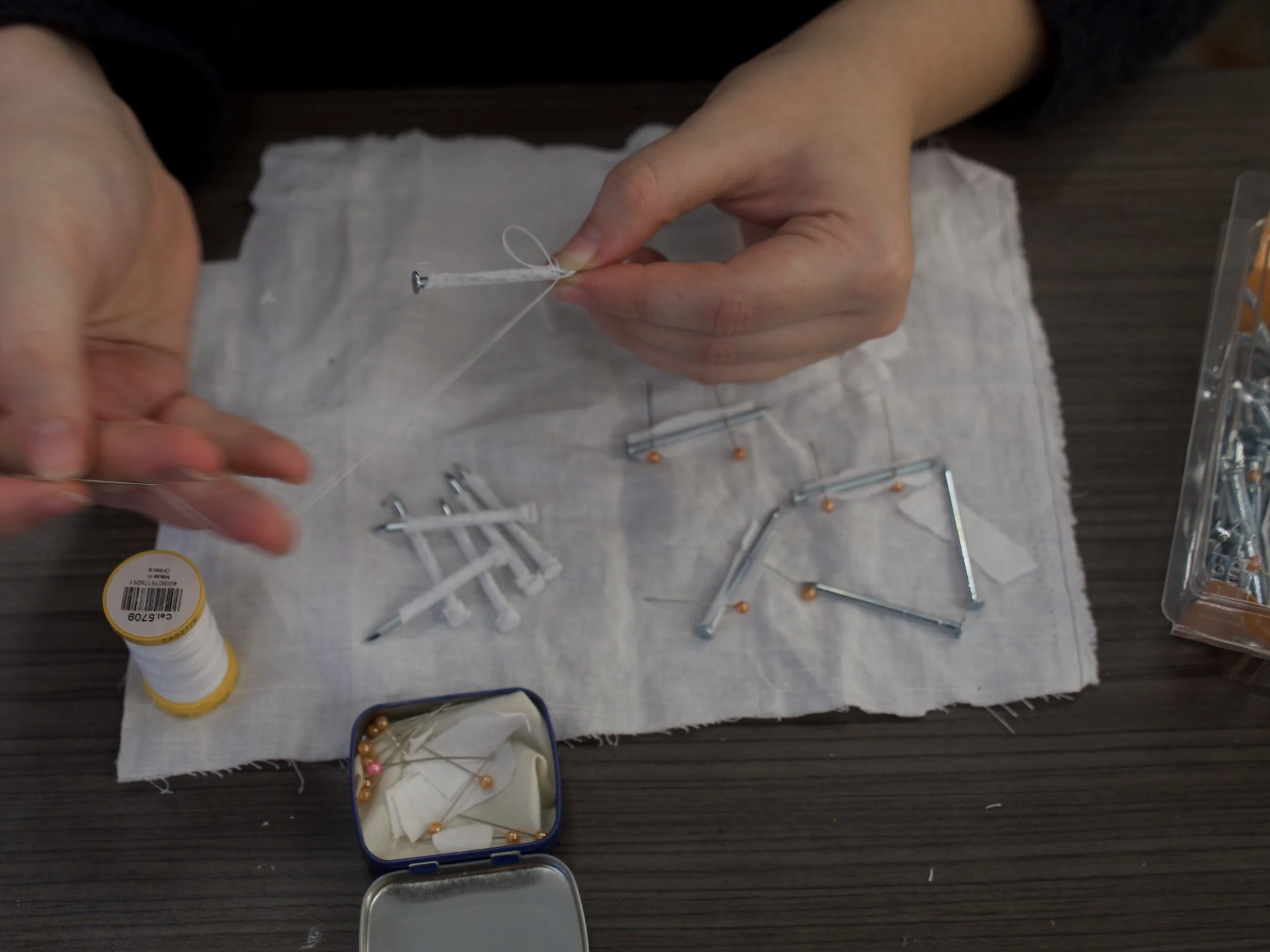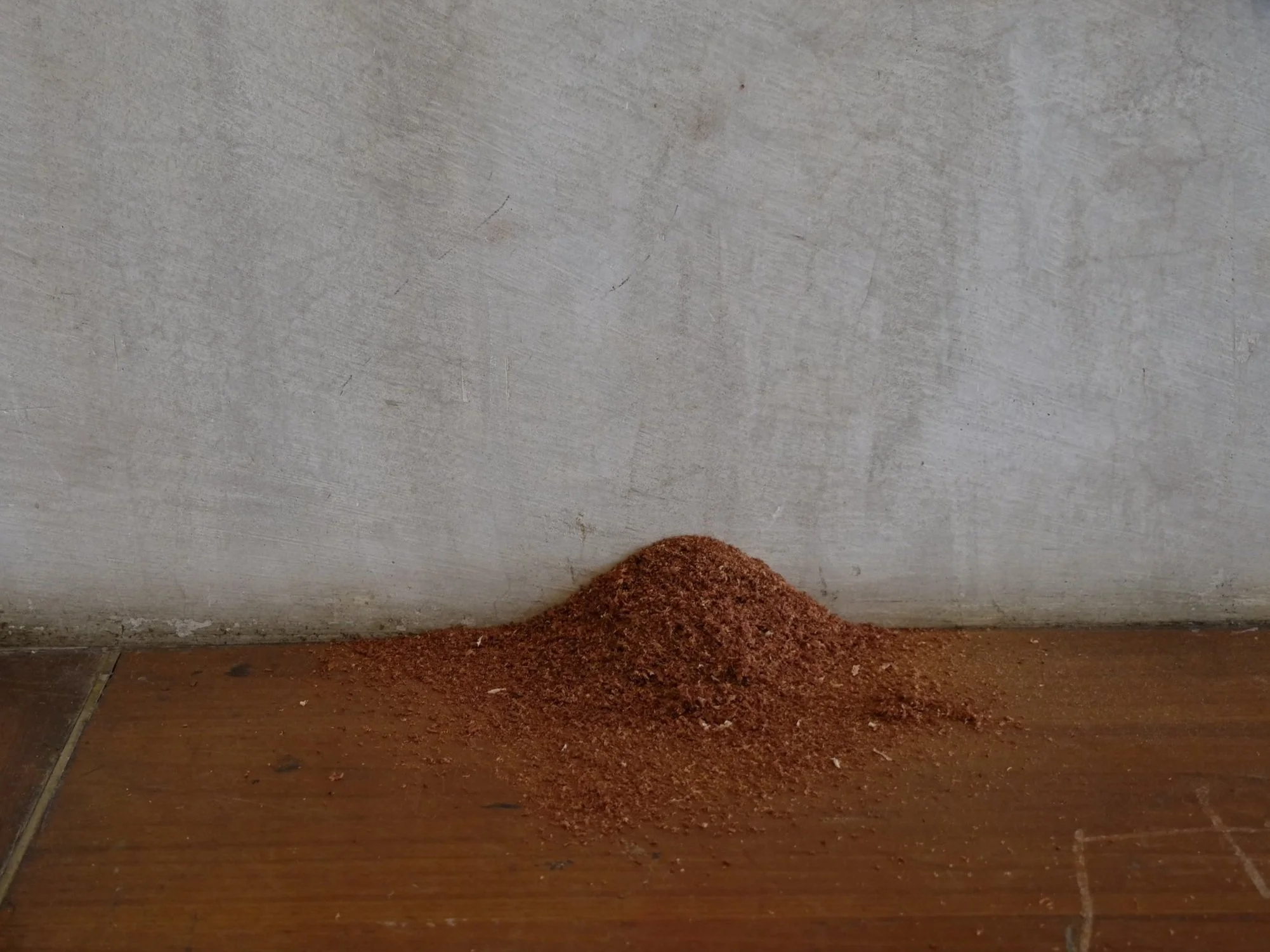
presence, space, encounters
Positioning personal experiences of grief and the anxiety of forgetting, the work addresses the universally felt experiences of death, grief, and life cycles. The shed’s a site that holds the presence of artist’s father despite his passing. Objects stored within the space perform the processes of memory. Departing their original functionality as carpentry tools and supporting benchtops, the contents transform into anchors of time, obtaining a duality of roles. Embedded knowledge of the space is recontextualised, reuniting one with the presence of a missing body. Place becomes more than a physical structure, it’s a transient site that harbours otherworldly encounters.
embedded, embodied, 2024, detail, cotton, linen, thread
passing embrace, 2024, detail, stainless steel nails, cotton, linen, thread

saw (dust), 2024, (detail), Jarrah sawdust, Tasmanian oak sawdust, wood glue

saw (dust), 2024 Jarrah sawdust, Tasmanian oak sawdust, wood glue

saw (dust), 2024, (detail), Jarrah sawdust, Tasmanian oak sawdust, wood glue

embedded, embodied, 2024, installation view

embedded, embodied, saw(dust), transient trace, 2024, installation view

embedded, embodied, saw(dust), 2024 installation view

transient trace, 2024, (detail), plaster of paris

embedded, embodied, 2024, (detail), cotton, linen, thread

transient trace, 2024, (detail), plaster of paris

passing embrace, 2024, (detail), stainless steel nails, cotton, linen, thread

embedded, embodied, passing embrace, transient trace, 2024, installation view

passing embrace, 2024, (detail), stainless steel nails, cotton, linen, thread

transient trace, 2024, (detail), plaster of paris

saw (dust), 2024, (mock install), Jarrah sawdust, wood glue

transient trace, 2024, plaster of paris
Presence, space, encounters investigates the bodied presence embedded within space, despite the departure of a physical body. Positioning personal experiences of grief and the anxiety of forgetting, the site of the shed reveals itself as an extension of my dad’s body despite his passing. Objects stored within the space perform the processes of memory. Manifesting as a location that stores physical traces of his being, past bodily actions are archived within the site’s contents. Embedded knowledge is recontextualised, harbouring a dialogue between states of being and non-being.
A space fractured from the house, the shed resides locked up and awaiting revival. Fostering various creative ventures, the shed is a site of exchange. Largely self-taught, my dad was a skilled carpenter. Adorned with traces of his hand, the house is furnished with hand crafted furniture. Bed frames, work desks, dining room chairs, bookshelves, among others, all originate from that small, isolated space of the shed. Holding the origins of past decision making, the shed stores its agency as a nexus of previous interactions. It is a site where memories manifest in a spatial sense. Transforming into tools of memory, its contents are memorialised into markers of time. Objects, surfaces, and materials hold the presence of the body that once activated the space.
Presented as a familiar landmark amongst a suburban landscape, the shed is an unseeming archive. Inflicted with the desire to rebuild in order to mourn, there is a retelling of familiar traces and archival marks into delicate and colliding forms. Presenting as a labyrinth of stored intelligence, the space archives past interactions. Referencing the role of archives in uncovering unknown information, physical marks and traces are retranslated via a hand foreign to their initial origins.
Departing their original functionality as carpentry tools and supporting work benchtops, the sheds contents transform into anchors of time. Gravitating to objects and surfaces that capture points of contact, the contents serve as vessels. Through intimate interactions with the shed’s contents, one is allowed access into the space to retain information of lost time, space and unseen actions. Poetically repurposing materials both familiar and foreign, functional objects are rendered non-functional in a state of decay, in-between states of being and non-being.
In a state of flux, the recontextualised objects and marks morph into entities of their own agency. Dependent upon the slow, mediated process of hidden labour, the work addresses the care driven forces inherent to modes of preservation. Resituating points of human contact from the space with human orientated materials, an intimate dialogue with the presence that occupies the space is nurtured. Speaking to the desire to hold onto intangible manifestations of the past, the familiar and foreign forms naturally encompass ethereal states.
Whilst inherently personal, the work addresses the universally felt experience of death, grief, and life cycles. Extending beyond the intimate exploration of grief, the body of work investigates the sociological understandings of space and places. The felt presence is one that seduces and demands further investigation. Treating the shed as an extension of his body, the space manifests as a meeting place between bodied and non-bodied realms. Place becomes more than a physical structure; it is a transient site that harbours otherworldly encounters.


